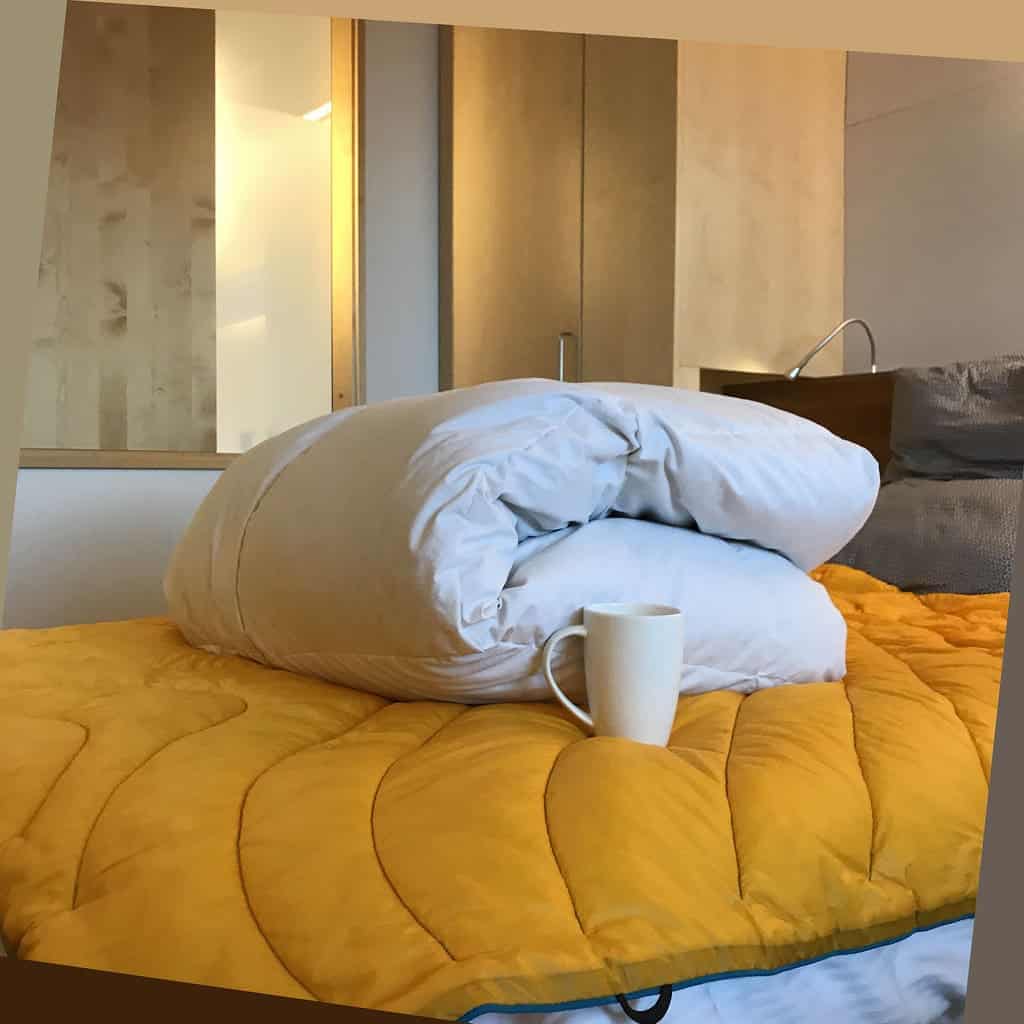Both duvets and dohars are blankets, but duvets are colorless and have less texture on the surface because they are planned economically and they have layers of bedding that keep us warm,
whereas dohars are available in a variety of colors and designs, and they are used by a variety of people due to their various prints.
Key Takeaways
- Duvets are thick, fluffy bedding items filled with down or synthetic fibers, while Dohar blankets are lightweight and made from layers of cotton or other natural materials.
- Duvets provide more insulation and warmth than Dohars, making them ideal for colder climates or winter months.
- Dohar blankets are more suitable for warmer climates or summer use due to their breathability and lighter weight.
Duvet vs Dohar
A duvet is a type of bedding consisting of a soft, flat bag filled with down, feathers, wool, or synthetic alternatives. A duvet is made for use as a warm bed covering. Dohar is a light quilted bedding made of three layers of fabric. It is a soft coverlet which provides warmth without the weight.

Duvets originated in the US and are also called comforters or quilts, which are mainly used in the winter season. They are also called duvet inserts.
They mainly contain the down feathers of ducks and geese. And the best feathers are those of the eider duck, which makes them so comfortable and cozy.
Dohar originated in India and is also known as the AC blanket or the quilt commonly, and they primarily consist of layers of cotton or flannel,
which make them so light in comparison to other blankets and are used in travel as well, as they take up less space. They make a good companion for regular commuters as these can be packed easily.
Comparison Table
| Parameters of Comparison | Duvet | Dohar |
|---|---|---|
| Contains | It is stuffed with feathers, wool, or silk | It is stuffed with layers of cotton. |
| Storage | This is bulky from a storage perspective | They are thinner and can fit in quite easily |
| Used | They are utilized in winters | They are used in winters and summers too |
| Designs | They are mainly plain or white | They came in a variety of prints and colors |
| Originated in | They originated in the US | They originated in India |
What is Duvet?
The duvet is a French word that means “down.” It came as an English word in 1759 and is also known as another word outside of Europe. And it is also called a “comforter” in US English.
It is a kind of bedding that is filled with soft particles like down, feathers, wool, cotton, silk and so many other things that make it comfortable and soft for sleeping.
It also contains the removable cover, pillows, and pillowcases, and the word “duvet” is especially used in British English. This is also considered a sleeper that does not contain the bedsheet normally as it has its cover, which can be removed and replaced.
They mainly contain the down feathers of ducks and geese. The best feathers are from the eider duck, which is mainly known for its effectiveness as a thermal insulator.
Modern duvets are like sleeping bags that are filled with down feathers, wool, cotton, or silk, and they reduce the complexity of making beds.
They can be warmer than blankets and have a low weight, and their construction is also very decent in that the baffles are the best.
However, the level of comfort is the same, irrespective of creation. It is a subspecies of quilts that can be put to use when weighted blankets are unavailable.

What is Dohar?
Dohars are the Indian version of quilts or we can say comforters, which mainly consist of the cotton layers, as they also involve stitching two sheets together and stuffing them with the layers of cotton so that they become warm and
comfortable. They are also lightweight and easy to carry, and they take care of our comfort.
They are much lighter than comforters, and they are also great for traveling because they take up so little space in our bags that they are also known as traveling partners.
They are also called “AC blankets” as they are used in the winter and in the summer too because they are suitable for both the seasons and they are cozy.
It may or may not require an external covering. At times, chained dohars themselves serve as coverings for heavy quilts thanks to their low maintenance.
While traditionally, dohar is called the summer blanket, and when the AC is at 21 to 24 degrees Celsius, these blankets are used for comfort. Hence, we can also find on the internet that dohar is labeled as AC quilts or blankets.
These are also present in different varieties to meet the demands of the customers because everyone has a different taste in colors and a distinct perspective on design.
Main Differences Between Duvet and Dohar
- A duvet is good in winter. Contrarily, dohar is good in both summer and winter both.
- Duvets are good in storage as compared to comforters. Meanwhile, dohar is good in volume as it is thinner than comforters.
- Duvets are good in construction where baffle is the best while dohar is best suited for temporary usage.
- Duvets are good with the plain textures and the white sheets but the dohar comes with numerous designs and prints (not plain).
- Duvets are good for filling as they have feathers, whereas dohar is predominantly made of cotton.

- https://www.icevirtuallibrary.com/doi/abs/10.1680/jgere.16.00010
- https://www.icevirtuallibrary.com/doi/abs/10.1680/jensu.17.00023
